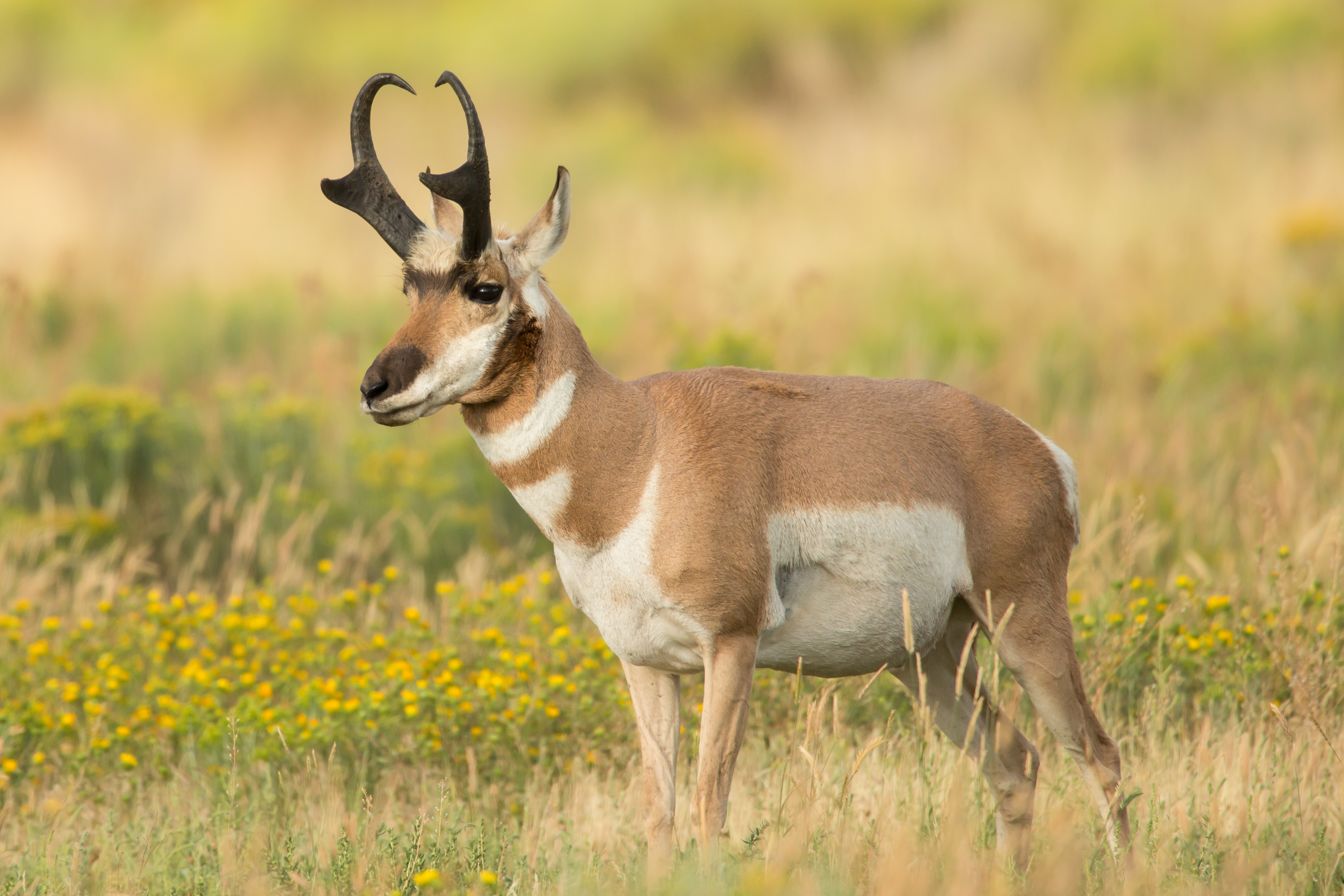Pronghorn is a horned and hoofed mammal native to North America. It looks like an antelope, but it is not closely related to antelope or to any other animal with horns or hoofs. The pronghorn ranks as the fastest mammal in the Western Hemisphere. It runs at speeds up to 60 miles (96 kilometers) per hour.

Pronghorns stand 32 to 41 inches (81 to 104 centimeters) high at the shoulder, and most weigh 80 to 100 pounds (36 to 45 kilograms). They have large ears, slender legs, and a short tail. Pronghorns vary in color from light tan to reddish-brown, with some white fur on the underparts, rump, face, and throat. Male pronghorns are called bucks, and females are called does.
Buck pronghorns have black horns with backward curved tips. A hooklike prong sticks out from the front and middle of each horn. The horns measure 10 to 18 inches (25 to 45 centimeters) long. Horns of does grow about half that size and usually lack prongs. Many does have no horns at all. Unique among all animals, pronghorns shed the sheaths (coverings) of their horns. They grow new sheaths every year. See Horn .
Pronghorns inhabit open grasslands from southern Saskatchewan in Canada through the western United States and into Mexico. The animals usually live in small family groups. During severe winters, however, they may form large herds of up to about 1,000 individuals. Mating generally occurs in September and October. The young, called fawns, are born in spring. A doe will give birth to one, two, or, rarely, three fawns. Fawns reach their mature size at 11/2 years of age.
Pronghorns eat mainly grasses and the leaves of herbs and low shrubs. In winter, they dig through snow for leaves. The chief enemies of pronghorns are coyotes, wolves, and eagles. When a pronghorn senses danger, it bristles the long hairs of its white rump. This action warns other pronghorns of the danger.
Scientists estimate that millions of pronghorns once roamed North America. But by the 1920’s, less than 20,000 of the animals remained. Since then, laws protecting pronghorns have helped greatly increase their population.
